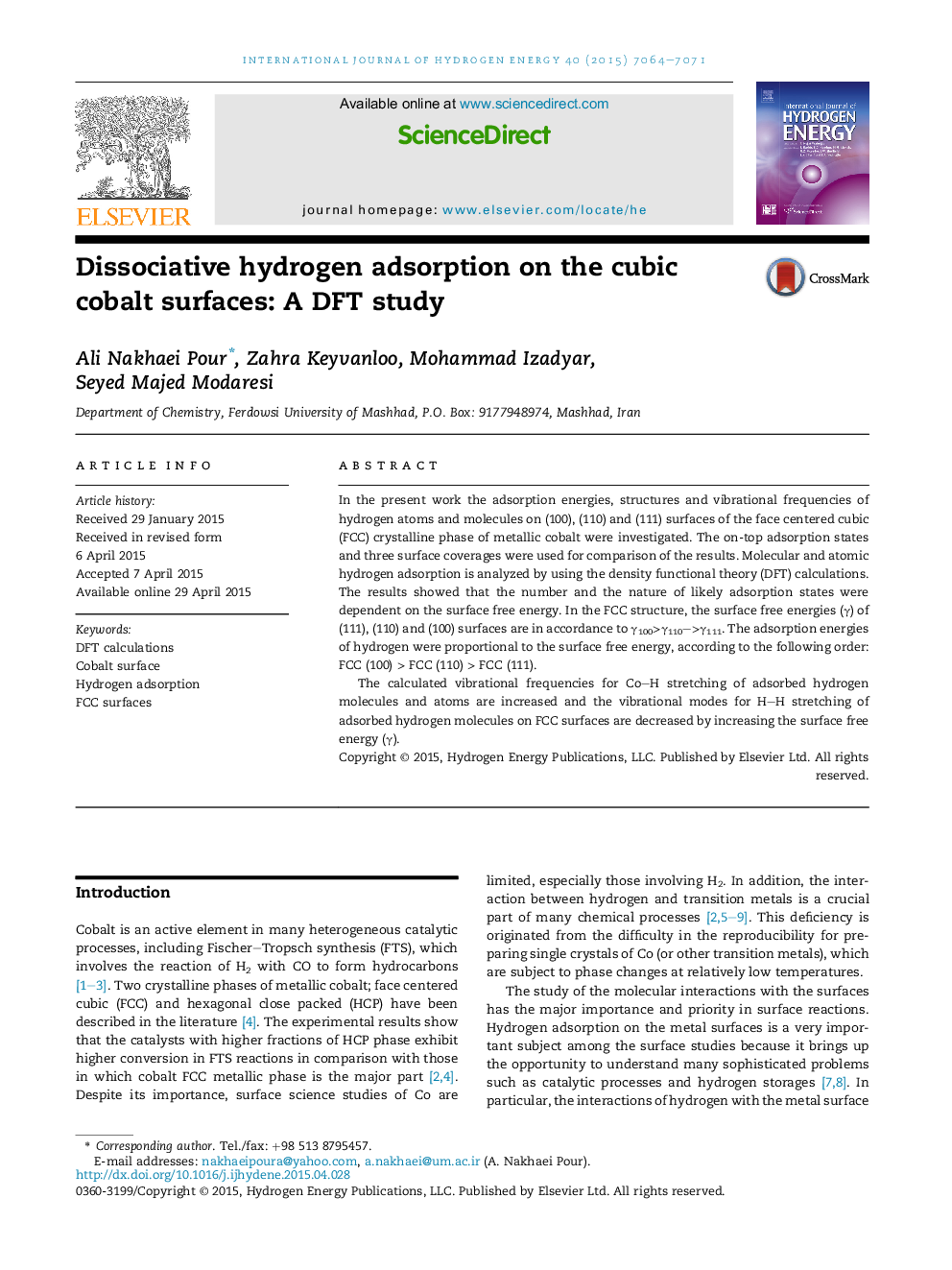| Article ID | Journal | Published Year | Pages | File Type |
|---|---|---|---|---|
| 1279890 | International Journal of Hydrogen Energy | 2015 | 8 Pages |
•DFT study of physically adsorption hydrogen molecules on FCC (110, 100 and 111) surface.•DFT study of chemically dissociation adsorption hydrogen atoms on FCC (110, 100 and 111) surface.•Evaluation of adsorption energies and frequencies of vibrational modes at different coverages on these surface.
In the present work the adsorption energies, structures and vibrational frequencies of hydrogen atoms and molecules on (100), (110) and (111) surfaces of the face centered cubic (FCC) crystalline phase of metallic cobalt were investigated. The on-top adsorption states and three surface coverages were used for comparison of the results. Molecular and atomic hydrogen adsorption is analyzed by using the density functional theory (DFT) calculations. The results showed that the number and the nature of likely adsorption states were dependent on the surface free energy. In the FCC structure, the surface free energies (γ) of (111), (110) and (100) surfaces are in accordance to γ100>γ110–>γ111. The adsorption energies of hydrogen were proportional to the surface free energy, according to the following order: FCC (100) > FCC (110) > FCC (111).The calculated vibrational frequencies for Co–H stretching of adsorbed hydrogen molecules and atoms are increased and the vibrational modes for H–H stretching of adsorbed hydrogen molecules on FCC surfaces are decreased by increasing the surface free energy (γ).
Graphical abstractFigure optionsDownload full-size imageDownload as PowerPoint slide
